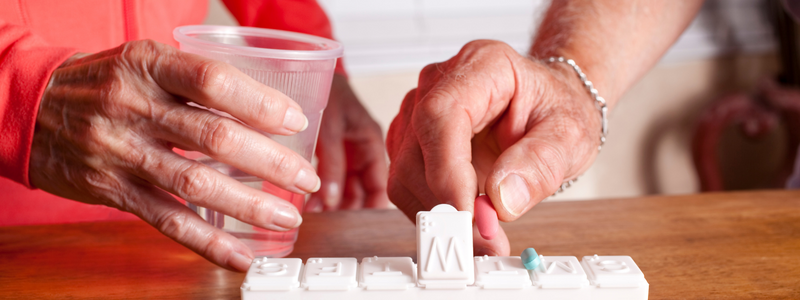
Hand in Hand has heard from our members that hire caregivers and personal care attendants that it can be challenging to stay on top of all the tasks that need to be done on a regular schedule. It can be frustrating to realize after the fact that care needs have not been met— this is where a detailed care task list can help.
If you are looking to hire a caregiver or personal care attendant, or you also find it valuable to create a task list before searching for a caregiver.
Here’s how to go about making your task list(s).

Step 1: Make a Big Picture Care Plan
Ask yourself: What does a typical week of care duties look like? Are there particular days that certain tasks must be accomplished?
A calendar can be a helpful tool in this process. Use a dry erase board, large paper calendar, or an online calendar (like Google Calendar) that is easy for both you and your team of PCAs/caregivers to see notes on these tasks. If you have multiple caregivers working in shifts, you can also keep track of who is working on this calendar.

Step 2: Create a Daily Task List
Next, create a list of daily tasks to be completed. Begin by thinking about an average day, and asking yourself (or your loved one), “What is the first thing that you do in the morning?” and, “How or what could someone do to support you with this task?” Continue this process when thinking about the rest of the day or shift. It can be helpful to get very detailed with this step.
After you have completed a list of tasks for a typical day, organize these tasks into a daily schedule. It can be useful to time these tasks — having a good understanding of how long tasks will take is important when planning for hiring PCAs/caregivers.
Here’s an example of what a daily morning schedule might look like:
| Time of Day for Task | Task Description | Approximate Length of Time for Task |
| Morning: 7 AM | Arrive to begin shift | n/a |
| 7 AM | Assist with transferring from bed to wheelchair | 15-20 minutes |
| 7:30 AM | Prepare Breakfast | 30 minutes |
| 8 AM | Assist with toileting routine | 30 minutes |
| 8:30 AM | Assist with showering routine | 30 minutes to 1 hour |
| 10 AM | Kitchen Cleanup | 30 minutes |
| 10:30 AM | Administer medications | 5 minutes |
| 10:35 AM (approximate) | Assist with morning mobility exercises | 1 hour |
| 11:00 AM | Prepare meal and/or light shopping tasks | 1 hour |
| 12:00 PM | End of shift | n/a |

Step 3: Making Detailed Lists for Specific Tasks
Some tasks may require precise repetition or a detailed process. A detailed checklist for these tasks can help you and the PCA/caregiver make sure everything is completed. Items on the list could include medication preparation or administration, personal hygiene, or meal preparation.
As an example, here is a task list a Hand in Hand member created for their caregivers to assist in the removal and cleaning of an external catheter.
Checklist for nighttime catheter removal:
- Prepare a basin of water in the tub by filling the basin halfway with warm water.
- Place one cap-full of detergent in the basin.
- After my clothing has been removed, remove the leg bag and catheter with the following steps:
- Unfasten elastic leg straps from leg by gently stretching elastic bands around white buttons (note: the elastic straps can be easily torn, so please use care when unfastening)
- Remove leg bag from leg and hang off of bed, allowing for excess urine to drain into leg bag
- Roll condom catheter down to remove, while holding leg bag straight in a vertical position
- Take leg bag into bathroom
- Remove condom catheter from the top of leg bag and throw away condom catheter into trash can
- Unscrew and disconnect top and bottom hoses at the white connection point
- Place both hoses and leg bag into basin to clean

Step 4: Evaluating your Care Task List System
Now that you’ve created your lists, test and evaluate them. Ask friends or family to be help with this process. This will give you the opportunity to fill in anything that’s missing.
As you are finishing, ask yourself if there are areas of instruction that might need to be improved. . For example, with meal preparation, it might make sense to have a set of recipes that can help guide the caregiver. Photos can also help make directions more clear.
Creating a care system is a process that will get better with practice.
Looking for caregiving worksheet templates?
Please visit the website for the National Institute on Aging.
